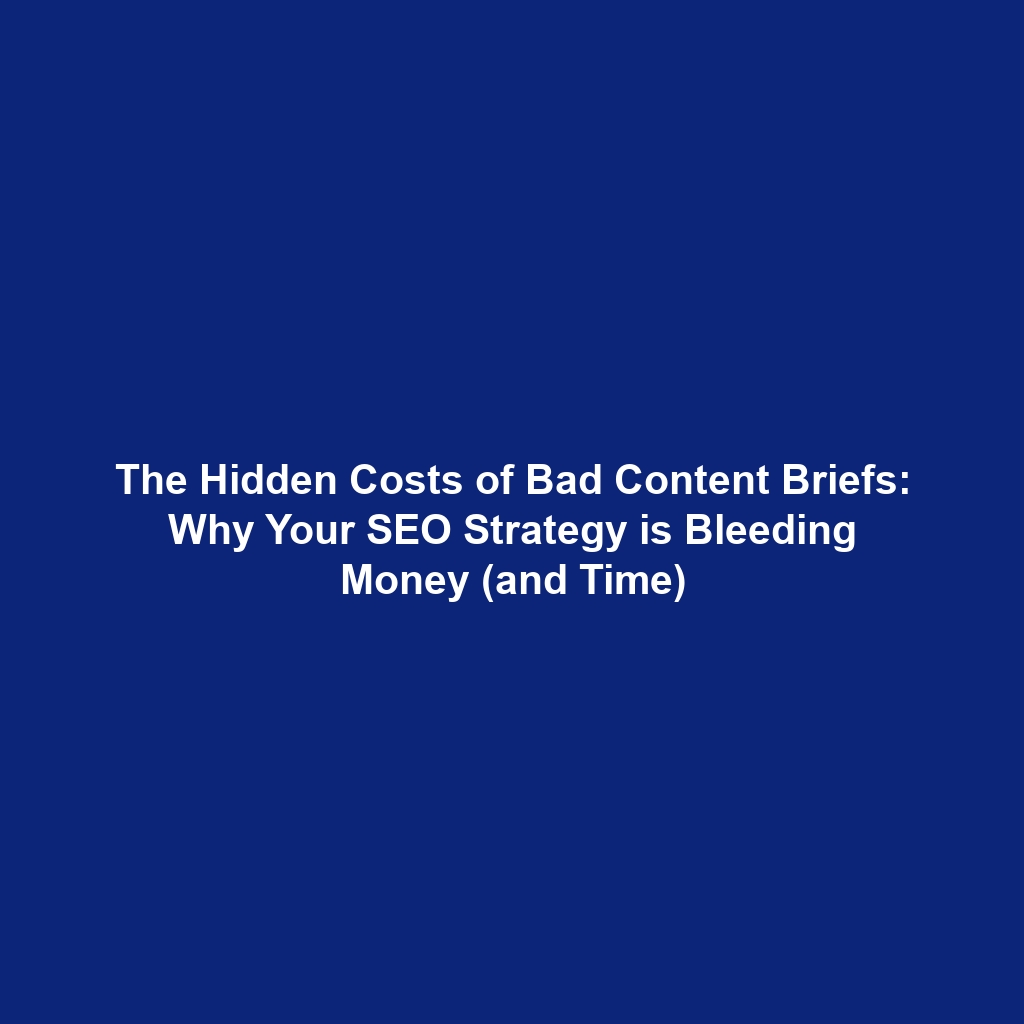In today’s rapidly evolving business landscape, market disruption is the new normal. To navigate these turbulent waters, organizations need to embrace agile strategies across all facets of their operations, including content creation and distribution. But how do you know if your agile content initiatives are actually working? The answer lies in real-time analytics. This article will guide you through leveraging real-time data to optimize your agile content strategy, demonstrate ROI, and ultimately, achieve your business goals.
Why Agile Content Needs Real-Time Analytics
Traditional content marketing often operates on a “set it and forget it” model. You create content, publish it, and hope for the best. Agile content, on the other hand, is iterative and data-driven. Real-time analytics provide the feedback loop necessary for continuous improvement. They allow you to:
- Quickly identify what’s working and what’s not. No more waiting for monthly reports to discover a campaign fell flat.
- Make data-informed decisions. Stop relying on gut feelings and start basing your strategy on concrete evidence.
- Optimize content on the fly. Adjust headlines, calls to action, or even entire pieces of content based on real-time performance.
- Personalize the customer experience. Tailor content to specific audience segments based on their behavior.
- Demonstrate ROI to stakeholders. Prove the value of your content efforts with hard numbers.
Without real-time analytics, agile content becomes a shot in the dark. You’re essentially throwing content out into the world and hoping something sticks. With data, you can aim with precision.
Key Insight: Agile content *demands* real-time analytics. It’s the only way to ensure you’re constantly learning, adapting, and maximizing your impact in a dynamic market.
Setting Up Your Real-Time Analytics Dashboard
The first step is choosing the right analytics tools. Google Analytics is a great starting point, but you might also consider platforms like:
- Adobe Analytics: A more robust solution for enterprise-level businesses.
- Mixpanel: Focuses on user behavior within your product or website.
- Chartbeat: Specializes in real-time website analytics and engagement.
- SEMrush/Ahrefs: Focused on SEO performance and keyword tracking.
- Social Media Analytics (e.g., Facebook Insights, Twitter Analytics, LinkedIn Analytics): Provide data on social media performance.
Once you’ve chosen your tools, it’s time to configure your dashboard. Here are some key metrics to track:
Key Metrics for Agile Content Success
- Engagement Metrics:
- Pageviews: The total number of times a page has been viewed.
- Time on Page: How long users spend on a particular page. A longer time on page generally indicates higher engagement.
- Bounce Rate: The percentage of users who leave your site after viewing only one page. A high bounce rate can indicate poor content or a mismatch between user expectations and content.
- Scroll Depth: How far down the page users scroll. This shows how much of your content they’re actually consuming. Tools like Hotjar can help track this visually.
- Social Shares: The number of times your content is shared on social media platforms.
- Comments: The number of comments on your blog posts or articles. A high number of comments often indicates a strong connection with your audience.
- Reach Metrics:
- Website Traffic: The total number of visitors to your website.
- Referral Traffic: Traffic coming from other websites or sources.
- Social Media Impressions: The number of times your content is displayed on social media platforms.
- Email Open Rates: The percentage of recipients who open your emails.
- Email Click-Through Rates (CTR): The percentage of recipients who click on a link in your email.
- Lead Generation Metrics:
- Number of Leads: The total number of new leads generated by your content.
- Conversion Rate: The percentage of visitors who convert into leads (e.g., by filling out a form).
- Cost Per Lead (CPL): The cost of acquiring a single lead through your content.
- Landing Page Conversion Rates: The percentage of visitors to your landing pages who complete the desired action (e.g., sign up for a webinar, download an ebook).
- Sales Metrics:
- Number of Sales: The total number of sales generated as a result of your content efforts.
- Revenue: The total revenue generated from content-driven sales.
- Customer Lifetime Value (CLTV): The predicted revenue a customer will generate throughout their relationship with your company. Content that attracts high-CLTV customers is particularly valuable.
- Attribution: Determining which pieces of content contributed to a sale. This can be complex, but tools like Google Analytics can help with attribution modeling.
- SEO Metrics:
- Keyword Rankings: The position of your website in search engine results pages (SERPs) for target keywords.
- Organic Traffic: Traffic coming from search engines.
- Backlinks: The number and quality of links pointing to your website.
- Click-Through Rate (CTR) from SERPs: The percentage of users who click on your website link in search results.
Remember, the specific metrics you track will depend on your business goals. If your goal is to build brand awareness, you’ll focus on reach metrics. If your goal is to generate leads, you’ll prioritize lead generation metrics. For e-commerce, sales metrics are king. It’s crucial to tie your content KPIs to overall business objectives.
Key Insight: Don’t get lost in vanity metrics! Focus on the metrics that directly impact your bottom line and align with your business objectives.
Using Data Insights to Optimize Your Content
Once you have your dashboard set up, the real work begins: analyzing the data and using it to optimize your content. Here’s how:
1. Identify Underperforming Content
Look for content with low engagement, high bounce rates, or poor conversion rates. Ask yourself:
- Is the content relevant to your audience?
- Is it well-written and engaging?
- Is it optimized for search engines?
- Is the call to action clear and compelling?
For example, I once worked with a SaaS company whose blog posts about advanced technical topics were consistently underperforming. After analyzing the data, we realized that their target audience (small business owners) didn’t have the technical expertise to understand the content. We shifted our focus to creating more beginner-friendly content, and engagement skyrocketed.
2. Optimize Headlines and Introductions
Your headline and introduction are crucial for grabbing attention. A/B test different headlines and introductions to see which ones perform best. Consider these tips:
- Use strong keywords.
- Create a sense of urgency or curiosity.
- Highlight the benefits of reading the content.
I saw a blog post’s views increase by 40% simply by changing the headline from “Content Marketing Strategies” to “7 Content Marketing Strategies That Will Double Your Leads.” The more specific and benefit-driven headline resonated much better with the target audience.
3. Improve Content Readability
Make sure your content is easy to read and digest. Use:
- Short paragraphs.
- Bullet points and numbered lists.
- Headings and subheadings.
- Visuals (images, videos, infographics).
A wall of text can be intimidating. Break it up with visuals and formatting to make it more appealing.
4. Optimize Calls to Action (CTAs)
Your CTAs should be clear, concise, and relevant to the content. A/B test different CTAs to see which ones generate the most leads. Examples of good CTAs include:
- Download our free ebook.
- Sign up for our webinar.
- Request a demo.
- Contact us for a free consultation.
Make sure your CTAs stand out visually and are placed strategically throughout your content.
5. Personalize Content
Use data to personalize the customer experience. Segment your audience based on their behavior and interests, and then create content that is tailored to their specific needs. For instance:
- If a user has downloaded an ebook on email marketing, you could follow up with content about marketing automation.
- If a user has visited a specific product page, you could show them targeted ads for that product.
6. Refine Distribution Channels
Are you distributing your content on the right channels? Track which channels are driving the most traffic and engagement, and focus your efforts on those channels. Consider these options:
- Social media (Facebook, Twitter, LinkedIn, Instagram, etc.)
- Email marketing
- Paid advertising (Google Ads, social media ads)
- Influencer marketing
- Content syndication
I advised a financial services company that was struggling to reach millennials. They were primarily focused on LinkedIn, but their data showed that millennials were much more active on Instagram. We shifted our focus to creating engaging video content for Instagram, and their engagement with millennials increased dramatically.
7. Monitor SEO Performance
Use SEO metrics to track your website’s visibility in search engine results. Identify keywords that you’re not ranking for, and then create content that targets those keywords. Also, focus on building high-quality backlinks to improve your website’s authority.
Tools like SEMrush and Ahrefs can help you track your keyword rankings, identify backlink opportunities, and analyze your competitors’ SEO strategies.
Key Insight: Continuous optimization is the name of the game. Regularly analyze your data, identify areas for improvement, and make adjustments to your content and strategy. Don’t be afraid to experiment and try new things!
The Power of A/B Testing
A/B testing (also known as split testing) is a powerful technique for optimizing your content. It involves creating two versions of a piece of content (e.g., two different headlines, two different CTAs) and then showing each version to a different segment of your audience. By tracking the performance of each version, you can determine which one is more effective.
A/B testing can be used to optimize:
- Headlines
- Introductions
- Images
- CTAs
- Landing pages
- Email subject lines
- Ad copy
There are many A/B testing tools available, such as:
- Google Optimize
- Optimizely
- VWO (Visual Website Optimizer)
- AB Tasty
A/B testing is an integral part of an agile content strategy. It allows you to make data-driven decisions about your content and continuously improve its performance.
Demonstrating ROI to Stakeholders
One of the biggest challenges for content marketers is demonstrating the ROI of their efforts. Real-time analytics can help you prove the value of your content to stakeholders. By tracking key metrics like leads, sales, and revenue, you can show how your content is contributing to the bottom line.
When presenting your ROI, be sure to:
- Use clear and concise language.
- Focus on the metrics that matter most to your stakeholders.
- Provide context and explain the impact of your content on the business.
- Use visuals (charts, graphs, etc.) to illustrate your points.
- Be prepared to answer questions.
For example, you could say, “Our content marketing efforts generated 500 new leads last quarter, resulting in $100,000 in revenue. This represents a 20% increase in leads and a 15% increase in revenue compared to the previous quarter.”
Key Insight: Connect your content metrics to business outcomes. Show how your content is driving revenue, generating leads, and improving customer satisfaction. This is how you prove the value of your content and get buy-in from stakeholders.
Real-World Scenario: Optimizing a Webinar Promotion
Let’s say you’re promoting a webinar. You can use real-time analytics to optimize your promotion campaign at every stage:
- Email Marketing: A/B test different subject lines to see which ones generate the highest open rates. Track click-through rates on different links in your email to see which topics are most appealing to your audience.
- Landing Page: A/B test different headlines, images, and CTAs on your landing page to see which ones generate the highest conversion rates. Use heatmaps to see where users are clicking and scrolling on your page.
- Social Media: Track engagement (likes, shares, comments) on your social media posts to see which content resonates most with your audience. Use social media analytics to identify the best times to post.
- Webinar Itself: During the webinar, monitor the chat and Q&A to see which topics are generating the most interest. Use polls to gauge audience understanding and gather feedback.
- Post-Webinar Follow-Up: Track email open rates and click-through rates on your post-webinar follow-up emails. Use the data you gathered during the webinar to personalize your follow-up messages.
By continuously monitoring and optimizing your webinar promotion campaign, you can maximize attendance, engagement, and lead generation.
Lessons Learned from Typical Professional Engagements
Over the years, I’ve seen countless companies struggle with their content marketing efforts. Here are some common mistakes I’ve observed, along with lessons learned:
- Mistake: Creating content without a clear strategy. Lesson: Develop a content strategy that is aligned with your business goals and target audience.
- Mistake: Focusing on quantity over quality. Lesson: Create high-quality content that provides value to your audience.
- Mistake: Neglecting SEO. Lesson: Optimize your content for search engines to increase your website’s visibility.
- Mistake: Ignoring analytics. Lesson: Track your content’s performance and use the data to optimize your strategy.
- Mistake: Not promoting your content. Lesson: Distribute your content on multiple channels to reach a wider audience.
- Mistake: Giving up too soon. Lesson: Content marketing is a long-term game. Be patient and persistent.
By learning from these mistakes, you can avoid common pitfalls and increase your chances of success.
The Future of Agile Content and Analytics
The future of agile content and analytics is bright. As technology evolves, we can expect to see even more sophisticated tools and techniques for optimizing content. Here are some trends to watch:
- Artificial Intelligence (AI): AI can be used to automate content creation, personalize content, and analyze data.
- Machine Learning (ML): ML can be used to predict which content will perform best and optimize content in real-time.
- Predictive Analytics: Predictive analytics can be used to forecast future trends and make data-driven decisions about content strategy.
- Improved Attribution Modeling: More sophisticated attribution models will help marketers understand which pieces of content are contributing to sales.
- More Granular Personalization: Content will become even more personalized based on individual user behavior and preferences.
Embracing these trends will be crucial for staying ahead of the curve and maximizing the impact of your content.
Conclusion
In today’s disruptive market, an agile content strategy is essential for success. Real-time analytics are the key to unlocking the full potential of agile content. By tracking key metrics, analyzing data, and continuously optimizing your content, you can achieve your business goals and demonstrate ROI to stakeholders. Embrace the power of data and make your content work harder for you. Remember, navigating market disruption is about adapting, learning, and continuously improving. Agile content, fueled by real-time analytics, provides the compass to navigate these uncertain times.
This article was optimized and published by Content Hurricane.


